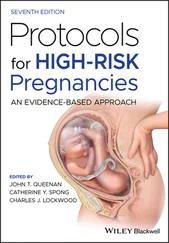(2.8) 
From both representations, the loss is expressed in terms of the capacitance (C) and the loss angle (tan δ ). Therefore, the factor C tan δ is an important parameter to ascertain the quality of an insulating medium.
For a nonideal dielectric, the δ angle is greater than 0°. This happens because of the existence of some contaminants and some conducting channel is formed in the dielectric. An increase in the value of tan δ indicates that the oil is contaminated because of oxidation and aging and ingress of excess moisture. Generally, it is not possible to have an ideal dielectric in nature. Due to some kind of impurity, a dielectric always has a loss angle less than 90°. The temperature significantly increases when the power dissipation is higher. The lower the DDF value, the better the integrity of the oil. Higher DDF values indicate the presence of contaminations in the oil. Formation of sludge and water leads to decay in dielectric properties in due course of time and increases the DDF value. Better dielectric properties can be achieved when minimum moisture is contained in the insulating oil. Many studies have shown that with aging, the dielectric properties degrade and this results in the increase of the DDF [55]. Oxidation reaction in the oil produces a variety of by‐products, in which some of them further form acids, sludge, and suspended particles [56]. DDF is a measure of the polarity of the oil molecules, and so NEOs cannot be directly equated with MOs, because the nature of the polarity in the triglyceride molecules of NEOs is different than MOs.
2.4.1.3 Dielectric Constant
Dielectric constant of insulating oil is a significant parameter of the dielectric spectroscopy analysis. The degradation of these properties makes the oil inappropriate to be used as an insulating medium. It is observed from many studies that the dielectric constant of NEOs is greater than that of the MO. This is because of the triglycerides present in the NEOs, which makes the ester oils strong polar dielectric.
2.4.2 Chemical Properties
2.4.2.1 Water Content
The water content in any dielectric liquid affects the performance of the apparatus containing it. The water holding limit of VO is much higher than that of MO, which is an added advantage in case of NEOs. It also absorbs the moisture present in solid insulation as compared with MO, thus keeping the paper dry and slows down its degradation process in the long run. Natural ester fluids undergo hydrolysis at higher temperatures, consuming the available water from kraft paper and improving its aging characteristics. The water saturation limit of MO is approximately 60 mg/kg [57] whereas vegetable ester oil has 1000 mg/kg [58]. When the moisture content is increased, the dielectric strength of the liquid insulation decreases. When the MO ages, the moisture transfers to the solid insulation like kraft paper and pressboard and degrades its dielectric properties, and thereby decreasing the performance and efficiency of the power transformer. During the operating conditions of a transformer, temperature of the oil increases and the paper then releases water to the transformer oil by undergoing oxidation reaction. This further augments the neutralization value and degrades the oil quality.
The production of corrosive sulphur is a major problem in transformers filled with MO. However, with natural esters, this is not a problem as they are bio‐based and extracted from plant seeds. Hence, using natural esters for insulation will not cause corrosion problems in any equipment. The corrosive sulphur is not present in NEOs, hence performing corrosive tests can confirm if there are any kind of additives added to the NEOs on purchase. During the operational lifetime, corrosive sulphur may be present in the transformer oil, even after using NEOs. This may be due to improper handling of oil during filling, reaction of the conducting parts, and solid insulation with the oil [59]. Most of the sulphur compounds are in stable form, but under certain circumstances, these stable compounds can be transformed into reactive compounds. In a study, comparison is carried out among the properties of transformer filled with MO and some NEOs [60].
2.4.2.3 Total Acid Number (TAN)
Total acid number (TAN) or neutralization value gives the measure of acidity in the sample. It indicates the number of milligrams of KOH required to neutralize the H+ ions present in 1 g of oil. The total acid number provides the purity of the dielectric oil. Stability toward oxidation of a liquid insulation can be analyzed by determining the neutralization value, DDF, and specific resistance. Natural esters undergo oxidation and decompose by the process of hydrolysis and generate a variety of by‐products like acids and alcohols. Some reports showed that the acid number of natural esters increased correspondingly with passing time [61]. The acidity for some of the oils ranged from 1 to 3 mg of KOH/g when stored for a period of three months [62]. According to ASTM D4625 (30 °C/50 weeks), the total acidity of Pongamia biodiesel rose up to 6 mg KOH/g. Studies have shown that Low Molecular Weight Acids (LMA) is higher than High Molecular Weight Acids (HMA) in MO, while HMA is higher than LMA in NEOs. Also, the total acid is much greater in NEO and hence the absolute quantity of LMA in a natural ester is higher than MO. This might be because that natural ester is much more polar and hence the interface between solid insulation and natural ester favors the stay of LMA in natural ester.
2.4.2.4 Oxidation Stability
The liquid insulation that is used in power transformer must have higher stability toward oxidation. In terms of oxidation stability, natural esters are not known to perform very well as they tend to oxidize very easily and thus they are not suitable for free‐breathing transformers. When these oils come in contact with oxygen, they produce sludge and also the viscosity changes. The addition of antioxidants, however, can slow down the oxidation process. The degradation reaction occurring in the MO leads to the breakage of bonds between two carbon atoms and the formation of alkenes. This happens mainly because of oxidation, dehydrogenation, and cracking. In natural esters, oxidation and hydrolysis occur forming CO, CO 2, and other by‐products. The method of oxidation varies between natural esters and MO as the by‐products formed in NEOs do not solidify and settle down, but it increases the viscosity.
Though antioxidants can be added to NEOs, they still tend to show lower oxidation stability due to higher biodegradability than MO, and so it is essential to use natural esters in sealed transformers [63]. It is always essential to choose a NEO with the optimum combination of saturated and unsaturated triglycerides. It is to be noted that ester oils with higher content of saturated triglycerides exhibit higher pour points and viscosity, whereas the ones with higher unsaturated triglycerides are more prone to oxidation. Stability toward oxidation of natural esters depends on the distribution of fatty acids, refining process, and the presence of natural antioxidants. The refining process of natural esters also affects the oxidation stability as there are many intermediate processes that lead to decrease in amounts of natural antioxidants, if present.
2.4.3 Physical Properties
2.4.3.1 Pour Point
Pour point is defined as the temperature at which a liquid just starts to flow under certain conditions. Its value should be minimum in order to use the fluid at a very low temperature as per ASTM D97. Natural esters have pour point in the range of −6 to −25 °C which is higher than that of MO. This is because of the presence of triglyceride structure in the natural esters. When crude oil is trans‐esterified, these triglycerides form mono‐glycerides and support the flowability of the liquid and make it comparable to that of MO [54, 64]. Some comparison of the pour point values of different oils can be seen in Figure 2.7a.
Читать дальше













